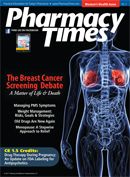Women's Health


Mary Barna Bridgeman, PharmD Rupal Patel Mansukhani, PharmD
Case 1—Fertility Tests and Products
SP is a 31-year-old woman who comes to the pharmacy looking for a home fertility prediction product to help her conceive. She states that she and her husband have been trying to become pregnant for 5 months without success. Based on a recommendation of her gynecologist, she has tried using a basal thermometer to predict her time of ovulation, but now is looking for something that can be used in conjunction with this method. She has a healthy lifestyle, exercises routinely, does not smoke or drink alcohol, and is not taking any other medications except for a daily prenatal vitamin. What type of fertility prediction product would you recommend to SP at this time? What are important counseling points regarding the use of home fertility monitors?
Answer
Home fertility prediction products are most often used by women to more accurately predict the time of ovulation and, therefore, the optimal time for sexual intercourse to increase the chance of conception. There are a variety of home fertility tests available for use, including basal thermometry, urine-based products, and other noninvasive tests.
Based on the array of fertility prediction products available on the market, couples trying to conceive should be counseled to select a product or method that will best suit their lifestyle. Because SP has tried using a basal thermometer, she may want to consider using a urine-based ovulation prediction test either alone or in conjunction with the basal thermometry method. Basal thermometry works by measuring a woman’s resting or basal body temperature first thing in the morning before arising. This method is designed to help a woman plot her normal resting body temperature throughout her menstrual cycle in order to detect the slight (ie, 0.4°F-1.0°F) increase that occurs approximately 24 to 48 hours after ovulation. If SP chooses to continue to use the basal thermometer method, instruct her to be sure to take her temperature first thing in the morning after at least 5 hours of continuous sleep. Remind her that the accuracy of this method can be variable, and factors such as moving around and her emotions can affect the accuracy of the temperature readings obtained. 1
Urine-based ovulation prediction kits detect the presence of luteinizing hormone (LH) in a woman’s urine, indicating that ovulation is imminent. If SP selects a urine-based ovulation prediction product, recommended that she collect her urine in the morning, when the LH concentration is relatively consistent, because the surge of this hormone usually begins early in the day. 1 It is important to mention that she should start using the test 2 to 3 days before ovulation is expected and follow the package directions, because all the ovulation kits have different instructions on how to read and interpret test results.
It is also important to assess that SP does not have polycystic ovarian syndrome, is not menopausal or perimenopausal, and is not using fertility medications, oral contraceptives, hormone replacement therapy, or tetracycline, because these factors could cause inaccurate test results.
Case 2—Calcium Supplementation
AS is a 58-year-old woman who comes to the pharmacy with a new prescription for omeprazole 40 mg. She also asks you for a recommendation for an OTC calcium supplement. She states that her doctor recommended she take calcium because she is postmenopausal and does not consume adequate dietary calcium secondary to lactose intolerance. She recently had a dual-energy x-ray absorptiometry scan for bone mineral density that came back normal. What recommendation would you make about her calcium intake?
Answer
The recommended daily allowance for women 50 years and older is 1200 mg of calcium and 800 to 1000 IU of vitamin D. 2 There are 2 forms of calcium— carbonate and citrate. Either can be recommended, but people with low levels of stomach acid can absorb calcium citrate more easily. Because AS is taking omeprazole, it is recommended that she take calcium citrate. Another important factor to counsel AS on is separating her dose in half and taking it twice daily. The percentage of calcium absorbed depends on how much is ingested at one time. Absorption is highest in doses greater than or equal to 500 mg. 3 Therefore, she can take calcium citrate 600 mg twice daily with or without food.
If a patient is taking calcium carbonate, it is recommended they take it with food to help aid absorption. It is also important to assess a patient’s calcium intake from other food sources, such as yogurt, milk, and other calcium-containing products. PT
Mary Barna Bridgeman, PharmD Dr. Bridgeman is an internal medicine clinical pharmacist in Trenton, New Jersey, and clinical assistant professor, Ernest Mario School of Pharmacy, Rutgers University. Dr. Mansukhani is a clinical pharmacist in South Plainfield, New Jersey, and clinical assistant professor, Ernest Mario School of Pharmacy, Rutgers University.
References
1. Briggs GC, Hurley H. Home testing and monitoring devices. In: Berardi RR, Ferreri SP, Hume AL, et al (eds). Handbook of Nonprescription Drugs: An Interactive Approach to Self-Care. 16th ed. Washington, DC: American Pharmacists Association; 2009:917-925.
2. National Osteoporosis Foundation. www.nof.org/aboutosteoporosis/prevention/calcium. Accessed April 27, 2011.
3. National Institute of Health: Office of Dietary Supplements. http://ods.od.nih.gov/factsheets/calcium. Accessed April 27, 2011.

